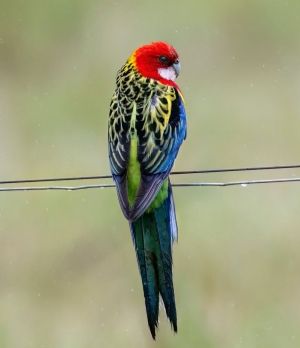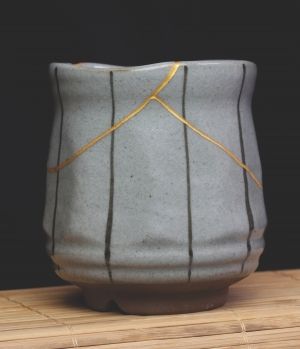Celebrating the restorative power of beauty

Celebrating the restorative power of beauty
8 January 2023
There is much that is beautiful to discover in each other.
I stroll around my garden, leaving behind a little trail of weeds I’ve been pulling out. Not everything I pull out is a weed, and not all weeds need to be pulled out. Some weeds are too pretty to be uprooted and are loved by garden pollinators. If they are not likely to suffocate other things growing in the garden, they get to stay – at least for a while.
I’ve been reading about beauty and how beauty can sustain and energise us in difficult times. These are certainly difficult times, and discovering places of beauty around us and within us can help us live joyfully and with hope at this present time.
Beauty is very subjective and not easy to define. Which plants are beautiful and should be allowed to keep growing? Which plants should be pulled out, and why? And whose opinion determines what is beautiful and worthy and what isn’t?
Years ago, we lived in a third-floor apartment, with the only windows looking out onto concrete buildings on either side of us. If I leaned out of the laundry window and craned my head up and out to the back, I could just catch a glimpse of an old walnut tree. Being surrounded by concrete, with so few glimpses of green, made my soul feel like it was shrivelling up.
I recently read that beauty is one of three virtues, along with truth and goodness, needed for a healthy society and is “a crucial part of life”.* It’s definitely necessary in my life!
Almost 400 years ago, French philosopher Blaise Pascal said, “In difficult times, you should always carry something beautiful in your heart.”
Finding your oasis
Whatever age we live in there will be difficult times, and recognising that beauty offers us an oasis can help to sustain and encourage us. Pausing for a moment to gaze at a sleeping cat, to notice the tiny first fruit on an avocado tree, or to wonder at a dew-covered spider’s web can all provide a respite from problems that might be consuming us.
 The beauty in nature can be uplifting.
The beauty in nature can be uplifting.
We might feel that beauty can only be found in the spectacular or perfect, which is not always easy to find. Yet it can also be discovered by paying attention to the small thing right in front of us, that at this very moment is simply beautiful. We are surrounded by beauty, and at any given time what strikes us as beautiful might be different from how we saw that same thing yesterday or even earlier today.
Discovering the simple beauty in things around us won’t change difficult circumstances, but it does do something to restore and refresh us inwardly so we can cope with those difficulties differently.
There are several aspects to beauty – the beauty of the natural world, the beauty we discover in other people, and our own inner beauty. This beauty is there for us to discover and rediscover, to experience and to share.
Most of us find it relatively easy to find beauty in nature, whether it is in magnificent mountain ranges, crashing ocean waves, or new shoots on a flowering vine. Sometimes we just need to open our eyes (and ears) to notice and appreciate what is right in front of us.
As well as the beauty experienced in nature, and despite all the negative and disturbing things happening in our world, there is much that is beautiful to discover in each other – the kindness of strangers when we least expect it, neighbours sharing a surplus of market vegetables, children laughing. When people show kindness to others, work for justice, offer hospitality or simply smile as they walk past, their inner beauty is revealed.
Beauty inside
It can, however, be much more difficult to discover the beauty within our own self. Society has conditioned us to judge ourselves by our physical appearance, generally based on the opinion of others, and when we do, we may feel we come up short.
 The Japanese art of kintsugi is a metaphor for repairing what is broken to reveal beauty.
The Japanese art of kintsugi is a metaphor for repairing what is broken to reveal beauty.
We also recognise there is unkindness, shame, mistrust and a whole host of other parts to ourselves that make us feel anything but beautiful. We carry wounds and scars that we often try to hide without realising it is precisely these wounds that make us beautiful.
An honoured tradition in Japan is the art of kintsugi – repairing broken pottery using lacquer to seal the cracks and then dusting those sealed places with gold, silver or platinum. What was flawed and broken becomes precious and unique.
There is something empowering and immensely beautiful about allowing our deep inner selves to be seen with such vulnerability and rawness and recognising the possibilities of restoration and transformation.
The powerful thing in recognising the beauty of our flaws is the realisation that this is what unites us with all humanity. We are all broken and imperfect in some way – and we are all beautiful in some way, whether we see it ourselves or not.
We can choose to live in ways that let our inner beauty shine by:
• by acting justly and with kindness
• by speaking the right word at the right time
• by looking for and discovering the beauty in everyone.
Yes, these are difficult days, so let’s carry something beautiful in our hearts and let it shine out of us!
* Howard Gardner, quoted by Ruth Wilson. Is Beauty the Only Necessity? spiritualityhealth.com.
Comments
No comments yet - be the first.